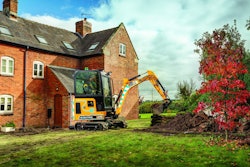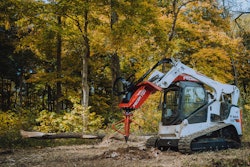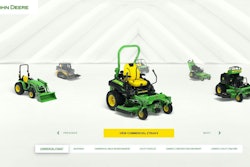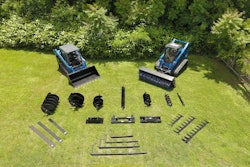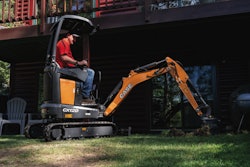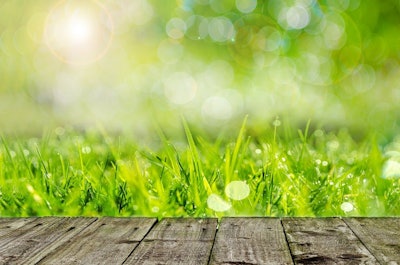 Photo: Pixabay
Photo: PixabayAs a landscaper, you aren’t just bringing your clients a beautiful yard to admire and enjoy. You’re making a difference for the environment as well.
The choices you make in terms of planting, watering and other systems can help encourage native plants and animals to flourish, improve the air quality and much more. Educating your clients and helping them maintain a sustainable landscape can keep that impact going long-term.
How can you help clients achieve sustainable landscaping over the long term? Here are some things to consider.
What makes landscaping sustainable?
When someone says “sustainable landscaping,” what exactly do they mean? Generally, it’s about creating a property that is beneficial to the environment and the native wildlife in the area.
You want to make plans that preserve water and improve air quality.
Some plants have a more positive carbon impact than others, so that’s something to think about. You can also work to restore habitats for pollinating insects and even small wildlife.
The right landscaping choices can also boost energy efficiency and minimize the use of non-renewable resources and chemical additives.
When you combine these impacts, you’re creating a landscape that not only brings beauty and joy but also makes a real difference to the planet.
Take advantage of potted plants
Sometimes, landscapers overlook potted plants, but if you’re dealing with a client with depleted soil or very little space, potted plants can be the perfect solution.
With pots, you can avoid taxing the soil or introducing chemical fertilizers. Instead, create high-quality planting material using bagged products. From there, you can create an oasis that attracts and feeds pollinators while also bringing color and joy to the homeowner.
Pots can grow everything from flowers to herbs to vegetables, so they are an important tool in sustainable living — even at a small scale.
Encourage greencycling for lawns
Lawns can be very taxing on the land’s natural resources, but many families enjoy them for both recreation and appearance. As a landscaper, encourage your clients to care for their lawns as sustainably as possible.
Clients can take steps to keep soil healthy through greencycling, which involves letting grass clippings and leaves fertilize the lawn. This reduces the need for chemical fertilizers and improves the nutrients and water-holding power of the yard.
When your customers take advantage of the natural mulching and nutrient boosts available to them, they will spend less on their lawn and enjoy healthy, lush grass with great soil underneath.
Install smart watering systems
Water is an essential resource that can’t be taken for granted. Smart watering systems cut down on how much your clients need to use water to maintain their landscaping.
You can help homeowners create systems to capture and repurpose rainwater, but make sure you abide by state regulations on this practice, even though using rainwater for landscaping is often acceptable.
There are also watering systems that have adjustable timing. The homeowner can have different settings for wet seasons and dry ones, or day and night. They can also adjust the amount of water throughout the day.
Finally, encourage your clients to use rainfall sensors. These devices detect when it’s raining and reduce watering automatically, rather than needing a manual adjustment. This can save considerable resources, helping a homeowner save money on their water bill and positively impact the environment.
Make a low-maintenance landscaping plan
As a professional, you have a significant impact on the plan and plants your client chooses. You can offer a selection of low-water, hardy, low-labor plants for your customers. This will make it easy for your clients to maintain their yard using sustainable practices.
Choose local plants that do well in all seasons, even winter. In mild climates, there’s no reason not to enjoy native species and encourage wildlife all year.
Even in harsher areas, you can choose plants that overwinter well and return strong in the spring. Your clients will love having low-cost, ongoing beauty in their yard.
Create animal and pollinator habitats
There has been a decline in pollinators and bees around the U.S. There are a variety of culprits, but one thing we know is that landscapers can make a difference in encouraging these species to survive and thrive.
By planting the right kinds of flowers, you can encourage native insects to visit your clients’ yard and pollinate the plants. This provides food for them and fun entertainment for your customers. You can also plant trees and shrubs strategically to provide habitats for native wildlife.
Of course, you want to check for underground obstructions before you dig. Using an industrial metal detector can help you find anything that might cause a problem or need to be replaced before proceeding.
Trees, grass and shrubs give food and shelter to local animals. You can create a beautiful landscaping plan that does more than help your customers — it helps the living creatures around them as well.
Sustainable landscaping matters
Taking the time and energy to create a sustainable landscaping plan makes a big difference. Not only will your clients get a long-term beautiful lawn, but they will preserve resources and save money through your careful planning.
On top of that, you can enjoy knowing that your professional efforts have made a difference for the planet and the local wildlife in your area. You can reduce water use, chemical fertilizers and improve the neighborhood’s air quality simply by doing your job well. That’s a difference to be proud of!
EDITOR’S NOTE: This article was written by Luke Smith. Smith is a writer and researcher turned blogger. Since finishing college, he is trying his hand at being a freelance writer. When he isn’t writing, you can find him traveling, hiking or gaming.

